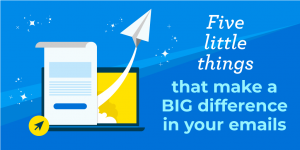Critics say corporate brochures are glossy, brag-and-boast budget suckers that virtually no one reads. Under the old rules of corporate brochure design, that was often true. Today, however, the corporate brochure has evolved from a stand-alone, one-way promotional piece into an integrated, interactive conversation starter.
Start with a strategy
To update your corporate brochure, start with a strategy. What is the purpose? Who is your target audience? If you’re introducing a prospect to your company, a corporate brochure saves time that you might otherwise spend reciting your corporate history and mission. It is an ideal forum to give readers a taste of the full spectrum of your capabilities and give them an understanding of your culture. Perhaps most importantly, a corporate brochure lends credibility to your organization. Anyone can print business cards and letterhead with a minimal investment, but a corporate brochure sends the message that you are a “real” company with a past, present and future.
Engage the reader right away
If you don’t engage the reader right off the bat, your brochure—and your investment in design and printing—is going straight into the trash bin. The cover is your first opportunity to capture the reader’s interest. Think beyond a picture of your product line and a corporate logo. Grab attention with an exciting photo or bold graphic, a splash of unexpected color and a customized font. Choose a unique size or shape of paper, a substantial paper stock and a special finish.
Be conversational
Inside the brochure, headlines and subheadings should give even the casual reader enough substance to understand your broad message and pique interest in the content that follows. Most marketers write corporate brochures to inform and instruct—much like a technical manual or report. But wouldn’t it be more enjoyable to read the latest bestseller? Lead with your very best information, and let your story unfold in a clear, natural, conversational way. You can’t tell your readers everything about your company in one brochure. Selectively use factual information to make your piece both interesting and believable.
Include a call to action
You have drawn your customers in. You’ve informed them about your company and your products. Now what? There’s only one correct ending. Include a call to action. While selling is not the primary purpose of a corporate brochure, why miss the opportunity? Give the reader an exclusive invitation, a free special report or a perforated card to request more information about your specific products and services. Prominently display your address, phone number, general e-mail address and Web site on the back cover to make contacting you easy. Continue the conversation by directing the reader to social media, like Twitter, Facebook, LinkedIn, or your corporate blog.
Companies tend to limit distribution of corporate brochures because of the cost involved, but a well-designed, professionally printed brochure can be worth a great deal more than its cost. The real expense comes from printing the first copy. You can order thousands of additional copies for comparatively little money. Get them in the hands of your employees, vendors, distributors, customers and prospects and see where the power of an effective corporate brochure takes you.
More Insights to Enjoy:
+ Print’s Role in the Digital Revolution
Sign up today to receive future issues of our award-winning newsletters to ensure you receive all of Action’s Insights.
© Action Graphics, 2013.






